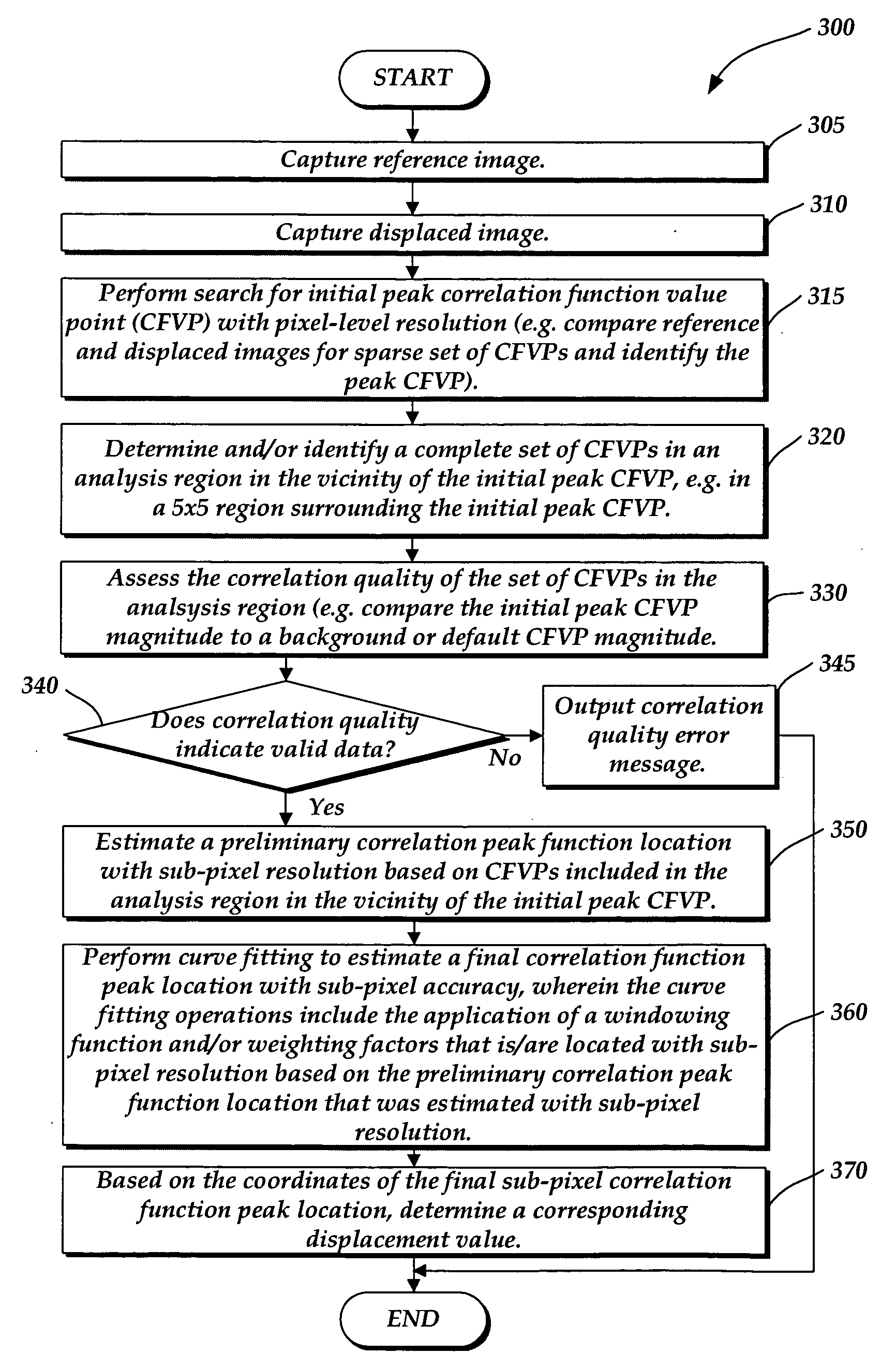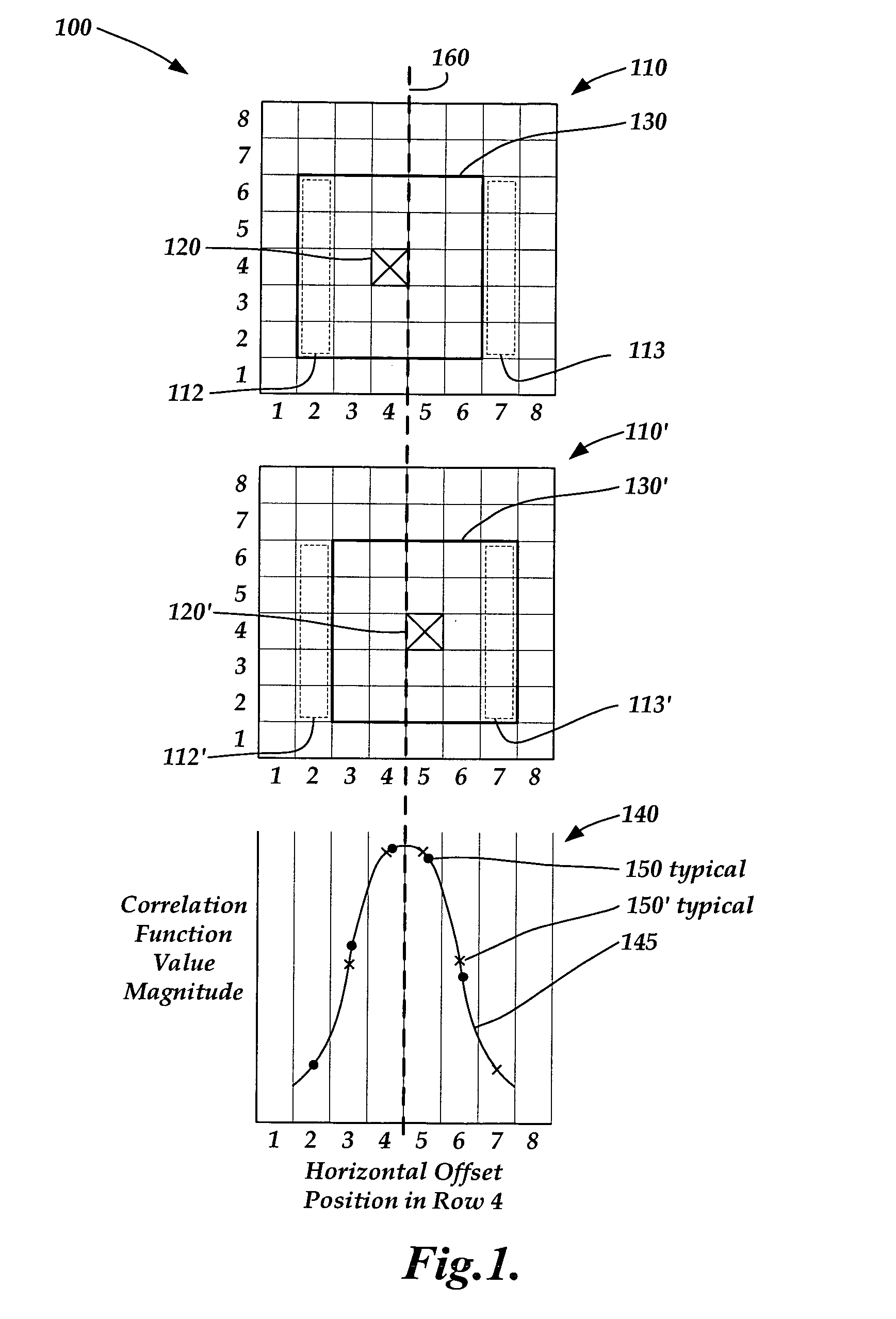Correlation peak finding method for image correlation displacement sensing
- Summary
- Abstract
- Description
- Claims
- Application Information
AI Technical Summary
Benefits of technology
Problems solved by technology
Method used
Image
Examples
Embodiment Construction
[0015]FIG. 1 shows a diagram 100 that illustrates one way of describing how periodic sub-pixel errors may arise when determining displacements by estimating correlation function peak locations using relatively few correlation function value points. The diagram 100 shows a first schematically illustrated 2D correlation function value point pseudo-image 110 corresponding to a first displacement between a reference image of an object and a first subsequent image of the object. Also shown is a second schematically illustrated 2D correlation function value point pseudo-image 110′ corresponding to a second displacement between the same reference image of an object and a second subsequent image of the object. Also shown is 1D correlation function value magnitude plot 140. The pseudo-images 110 and 100′, and the plot 140, are all aligned to a common reference frame along the horizontal direction in the FIG. 1, as described in greater detail below.
[0016]The schematic illustration of the pseu...
PUM
 Login to View More
Login to View More Abstract
Description
Claims
Application Information
 Login to View More
Login to View More - R&D
- Intellectual Property
- Life Sciences
- Materials
- Tech Scout
- Unparalleled Data Quality
- Higher Quality Content
- 60% Fewer Hallucinations
Browse by: Latest US Patents, China's latest patents, Technical Efficacy Thesaurus, Application Domain, Technology Topic, Popular Technical Reports.
© 2025 PatSnap. All rights reserved.Legal|Privacy policy|Modern Slavery Act Transparency Statement|Sitemap|About US| Contact US: help@patsnap.com



